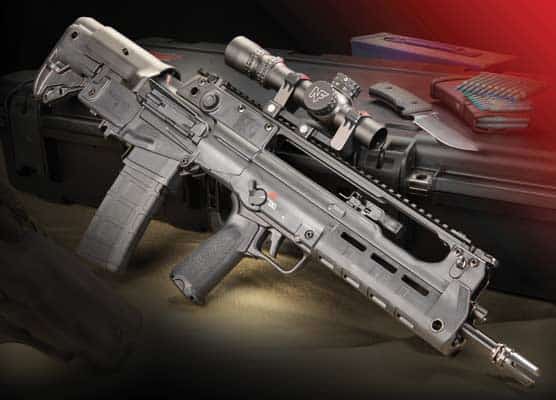A Good And Proper Cleaning
The Key To Accuracy, Reliability and Longevity!
The great days of cheap surplus ammo were the 1950s and ’60s. I thought corrosive primers were in the past, but not so. Large quantities of such ammunition have been imported in recent years and sold at very attractive prices.
Corrosive primers use potassium chlorate, which upon firing leaves a potassium chloride residue, very similar to common salt. Left alone it causes bore rust within a couple of days. Oil and scrubbing won’t get it out, only water. The idea of water in the bore horrifies many shooters. I used a lot of corrosive primed surplus ammunition in the 1960s. I made it a point to get in a good day’s shooting and clean the bore the same day.
I’d generally use clean rainwater, brought to a rolling boil and poured in a pan with a bit of soap. Then I’d use a cleaning rod with a tight-fitting patch, put the muzzle in the pan and pump water through the bore and chamber. When I was sure the bore was clean, I’d pour boiling water over the bolt. The boiling water would dry quickly after which I’d spray the bolt with G96 Gun Treatment and run G96 soaked patches through the bore.
Don’t Clean Just The Bore
Bores of .22 rimfire rifles seldom need cleaning unless you hunt all day in the rain. I suspect more rimfire bores are damaged by overzealous use of cleaning rods than by shooting. This doesn’t mean the rimfire rifle can be neglected.
The .22 rifles tend to get shot a lot. The result is a buildup of powder residue on the operating mechanism of the rifle. I once bought a Winchester 74 semiautomatic .22 consigned at a gun shop. Price was reasonable as I was told it wasn’t very reliable — just old, you know. It looked to be in very nice shape and visual examination showed no broken or missing parts. At the asking price, I didn’t think I’d be taking much of a gamble.
Back home, I disassembled the rifle for a thorough inspection. There wasn’t a thing wrong except it appeared the mechanism hadn’t been cleaned since the rifle was made in 1941. I used solvent and cleaning patches to wipe away decades of powder residue and finished with a light film of lube/preservative before reassembly, after which the rifle ran perfectly.
Semiauto .22s generally operate as unlocked breech blowbacks with enough residual pressure to eject fired cases without need of an extractor, except to remove unfired rounds. With manually operated bolt, pump and lever-action .22s, the extractor is needed to remove fired cases from the chamber. Faulty extraction is probably the most common failure I see in .22s. Sometimes the extractor hook is broken or rounded off, but most times the problem is simply powder residue buildup behind the extractor hook or on the spring powering the extractor. Aerosol solvent sprays, perhaps with an assist from a small brush, generally restore proper function.
The other possibility is a rough chamber. When I was a kid, .22 Shorts were much less expensive than .22 LRs. A lot of shooters used them exclusively. Sometimes after a couple of thousand shots, there would be a buildup of bullet lube in the chamber just ahead of the case, making it difficult to chamber LR cartridges. I had this happen with Dad’s Savage pump .22, fortunately fixed by cleaning the chamber with a bristle brush. I read of the danger of pitted chambers from using too many Short cartridges but never encountered such a problem.
These days Shorts are hard to find and generally cost as much or more than LRs so it’s hardly an issue anymore. If you do encounter an old .22 marked “S, L, & LR” (Short, Long, & Long Rifle) that won’t accept LR cartridges, a good scrubbing of the chamber may resolve the issue.
Use Quality Cleaning Equipment
A good cleaning rod is one piece, correctly sized for the bore and either smooth steel or plastic coated. They should only be used with a good bore guide to protect the chamber and throat. Poor cleaning rods and poor technique do more damage to bores than neglect. Like most of us, I used to cut cleaning patches from old T-shirts. They always seemed too big or too small. For the modest cost, “store bought” patches are well worth it.
I’ve become a big fan of pull-through systems, notably the excellent kits made by Otis. They do an excellent cleaning job, are no threat to the chamber or throat and with a little care and attention, won’t damage the muzzle crown. It’s true you can damage a crown by pulling the cord at an angle, so don’t do it. I also like Bore-Snakes for quick bore cleaning during long shooting sessions at the range or while varmint shooting. An occasional pull through the bore makes end-of-day cleaning much easier.









